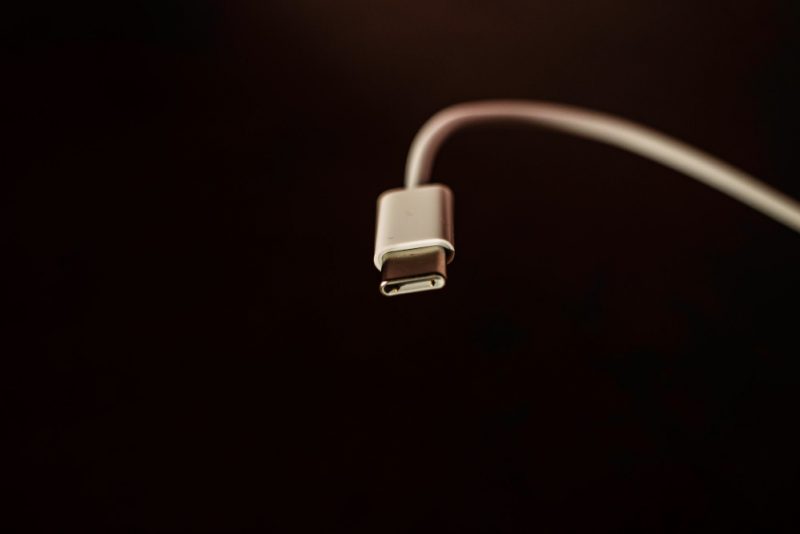tl;dr Yup, definitely. Except for one now common-ish standard.
Now, the next question, perhaps, is which cables do you need for what high-refresh rate setup, and how can we optimize this setting to suit your (presumably) gaming needs better?
Well, we probably need to start from the connector standards themselves.
(DISCLAIMER: Specific technologies of the cables themselves will not be discussed at length in this article.)
Table of Contents
Relative Refresh Rates and Data Bandwidth
The very first doubt that comes to mind when it comes to specific higher refresh rate cables, is the fact that differentiating similar cable types is typically an exercise in frustration. Version standards officially refer to the ports themselves, and visually speaking, you won’t see any significant changes to the connector layout and pinouts of the cables themselves.
But, as anyone who have ever tested random old cables know, this is just not the case. Your older pre-2010 HDMI cable would definitely fit and send visual output to your high-resolution monitor, but will not display the intended refresh rate.
So, are there pointers to easily choose between the right cables? Well… nothing visual, actually. You’re usually left with either trying to estimate the relative age of the existing cable (version release cross-referencing), or just confirm to retailers that you are going to purchase a cable type with the prescribed amount of data bandwidth.
In this regard, specific version types would provide specific refresh rates for certain configurations. The following standards provide the list of optimal frequencies for most commonly used monitor models (post-2010):
1. HDMI (High-Definition Multimedia Interface)
A modern display hardware port standard since the start of the 21st century. Previously known to support only standard 60Hz refresh rates. But since 2010’s, it has started support for 100+ Hz refresh rates thanks to version 1.4, with the standard use of HDMI for higher refresh rate settings becoming common as 1080p (FHD) LED monitor costs significantly went down.
Commonly used high-refresh-rate HDMI port versions and cable types (transfer bandwidth):
- HDMI 1.4: Standard-type (10 Gbps) – 1080p @ 120/144 Hz, 1440p @ 85Hz
- HDMI 2.0: High-Speed type (18 Gbps) – 1080p @ 200/240Hz, 1440p @ 144Hz,
- HDMI 2.1: Ultra High Speed type (48 Gbps) – 1080p @ 480+Hz, 1440p @ 360Hz, 4K @ 180Hz (5K @ 100Hz)
2. DisplayPort (DP)
Commonly thought of today as the most convenient high refresh rate connector that you can use for any setup. Industry-related product manufacturers have standardized it as the next-generation connector for future display devices since 2008. Unlike HDMI, whose earlier versions do not support refresh rates higher than 60Hz, DisplayPort is designed to feature 120-144Hz right at the very beginning.
Commonly used high-refresh-rate DisplayPort versions and cable bandwidth labels:
- DisplayPort 1.0: 10.8 Gbps – 1080p @ 144Hz, 1440p @ 85Hz,
- DisplayPort 1.2: 21.6 Gbps – 1080p @ 240Hz, 1440p @ 144Hz, 4K @ 75Hz
- DisplayPort 1.3/1.4: 32.4 Gbps – 1080p @ 360Hz, 1440p @ 240z, 4K @ 120Hz
3. USB Type-C (DisplayPort/HDMI)
Ah yes, the modern connector standard that is psychologically intended to be the replacement of DP. Just kidding. But really, in terms of pure convenience, this DisplayPort/HDMI signal carrying connector is so much easier to use, if you simply want instant high-refresh rates on hardware that support it, especially on minimalist or portable setups.
Commonly used USB Type C versions and related refresh rates:
- Refer to DisplayPort (1.3/1.4) and HDMI 2.1 above
4. Thunderbolt 3 (USB Type-C)
Thunderbolt was previously introduced and advertised by Apple as the “uber cutting edge” display connector technology… last 2011. Comparatively, it does feel like a step above and beyond even more updated versions of HDMI and DisplayPorts. But unlike the still-treated-as-default HDMI and DisplayPort, it remains as an alternative standard only, with exclusive use of such connectors only configured on specific high-end hardware.
(Any USB Type-C cable will do. No varied types of similar cables needed)
- Gen 1, 4-Lane – 1080p @ 240Hz, 1440p @ 144Hz, 4K @ 75Hz
- Gen 1, 8-Lane – 1080p @ 480+Hz, 1440p @ 300Hz, 4K @ 144Hz
- Gen 2, 4-Lane – 1080p @ 360Hz, 1440p @ 240Hz, 4K @ 120Hz (standardized)
- Gen 2, 8-Lane – 1080p @ 480+Hz, 1440p @ 360Hz, 4K @ 180Hz
5. Thunderbolt 4 (USB Type-C)
This is the latest version of the cutting-edge Thunderbolt bolt announced “fresh” only last year at CES 2020. We’ve made Thunderbolt 4 into a separate category, rather than make a general “Thunderbolt” entry due to the distinct differences in developed protocols, rather than just updated specs for the connection port. In any case, it will go hand in hand with the upcoming USB 4.0 standard, while naturally still being backward compatible, with just about any other connector on this list.
- Specs are the same as Thunderbolt 3 Gen 2, 4-Lane
6. Dual-Link DVI-D/DVI-I
A much less common high-frequency standard nowadays, but technically still works as per the set requirements of our article. Who knows? That weirdly unused Dual-Link DVI port in your basement might actually be of some use!
- Maxed at 1080p @ 144Hz, and 1440p @ 75Hz (cable AND ports have full 3×7 21-pin grid)
Again, the tricky part here is using the correct cable version. Since apart from age, there is no distinct difference between similar cable types. Your best bet is to go to a modern, presumably always updated tech store, and ask for confirmation from the clerks there if the cables on sale do feature the version that it is advertised to connect to. (which, in this day and age, most likely does)
If all else fails, just go ahead and TL;DR to the next sub-topic.
Safest or Quickest Cable Type to Use?
Without a doubt, USB Type-C, if it is supported.
Convenience-wise, though, the award still goes to the more common DisplayPort cable. If not using insane “overclocked” frequencies beyond 240Hz, you are far more likely to get the correct DisplayPort or Thunderbolt version for the cable you are trying to purchase.
So yeah, you are guaranteed to get the target 144Hz even if you just happen to pick up some random DisplayPort or USB Type-C cable lying around (which, after all, is technically the main challenge of this article). This is especially the case if you are using lower-end or somewhat older-ish graphics cards, which instead might have an assortment of HDMI and DisplayPort connectors for multiple monitor setups.
The Hidden Specification: Your Graphics Card
Well, this isn’t really a surprise to anyone at this point. Anyone should be able to realize immediately the GPU connection once mentioned to them. So, instead of mulling about the correct cable connection for your monitor, you should probably instead worry about your GPU and monitor compatibility.
No, no, this is about getting the setup to work or not. This isn’t your first build where everything rests on your completed PC being able to POST or not. Because oddball connections aside, monitors connected to GPUs will definitely work. The problem will mainly lie in the difference between your perceived requirements and actual ones.
In this regard, buying a high-spec monitor is a commitment, because you paid a lot of extra bucks for option to use it at a specific resolution at high frame rates. So, it is almost a financial obligation to find a GPU that can effectively utilize that potential. Let’s say, maxing out a 1440p, 165Hz monitor? Anything current-gen triple-A would most likely require a 3070/6800 XT or higher.
Otherwise, just stick back to that old-timey 1080p 60Hz LED screen and HDMI cable of yours.




